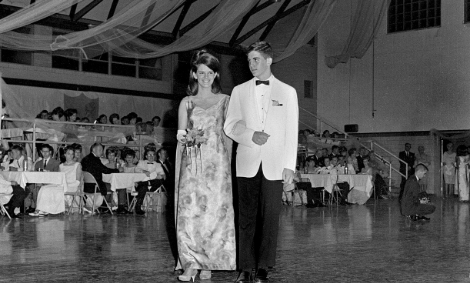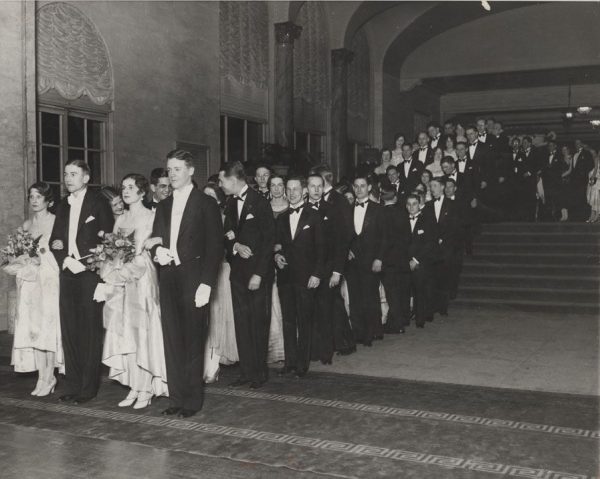Every year, prom is celebrated by a number of students at schools. Prom has long been a tradition during late high school years. Let’s go deeper into understanding prom and its history.

What is prom?
Prom is short for promenade, a formal event that has become a long-standing tradition in many high schools. Prom is a dance that is celebrated towards the end of high school, typically during a student’s junior and senior years.. It is essentially a celebration, especially for graduating students before they are sent off on their own path, which they will begin after high school. This special event gives students a chance to dress up, socialize, and make the most out of their special event to create lasting memories with classmates. Prom is usually held during spring time, often becoming one of the most anticipated events every school year.
Why is prom important?
Prom’s importance varies from person to person, depending on how they view the experience. For some, prom can be described as a special dance with friends or with a date before the end of their senior year of high school. It highlights a moment of celebration and reflection for senior students that brings them together one last time before they go their separate ways. Prom can create lasting memories with the people you’ve met throughout high school, offering a final opportunity for seniors to appreciate those connections before moving on and focusing on the bigger things in life, such as careers, college, and overall personal growth.
Elements of prom
To understand prom, let’s talk about the important aspects that make prom what it is!
- Theme – Most proms have a theme (e.g., EPHS’s 2025 Prom’s theme was ‘Gatsby’).
- Venue – Proms are usually held in school gyms, banquet halls, hotels, or other larger spaces.
- Music/DJ – A DJ or band usually plays suggested music for the event.
- Decorations – The prom venue is typically decorated based on the theme.
- Dinner or Refreshments – Some proms serve dinner, snacks, and drinks.
- Dancing – Prom involves slow dancing and group dances.
- Prom Court – Students vote for seniors for Prom King and Queen.
- After-Prom Events – Students can attend school-sponsored events that follow prom or students can make their own after party!
History of Prom
Now that we’ve looked into the meaning of prom, its traditions, and values, let’s look at where prom originated, how it evolved, and the challenges that prom is presented with.

Origins of Prom
Proms started at prestigious Northeastern colleges in the late 1800s to serve as a formal event where students could celebrate important academic milestones and socialize in a refined setting. In the early years of prom, it was an elegant gathering that highlighted achievements, proper etiquette, and transition into adulthood. Then, from the 1920s – 1930s, high schools across the U.S. started to adopt prom traditions as well. This shift allowed early adulthood students to experience formal events, proper dress code, and social manners. This would ultimately prepare high school students for the expectations they will face after high school.
The Golden Ages of Prom
Prom achieved mass popularity during the post WWII era (1940s-1950s). During this time, prom’s popularity skyrocketed – it became a celebrated rite of passage for American high school students. Around this time as well, we saw the introduction of many of the prom traditions we are familiar with today, such as prom kings and queens, adding more excitement and maybe a little bit of competition during the event.
Racial Segregation + LGBTQ+ Inclusion
Many southern schools continued to hold segregated proms until 2008. These segregated proms showed the lingering problem of racial inequality, not only for prom but for the entire education system. However, as years progressed, students all over the country continued to challenge prom, not only for segregation but for a lot of the other long-standing prom traditions, including LGBTQ+ inclusion. Today, prom has evolved into a more inclusive event, where students of all races, background, and gender identities are welcome to attend. Many are advocating for the ability to attend with attire that reflects their true identity, helping to celebrate individuality and acceptance.

Conclusion
Prom’s history is a good example of the evolving traditions and values of American society. Created for upper class colleges, it was made to teach students etiquette and transition them into adulthood. As time went on, prom became more popular and is now adopted into high school tradition. While prom has faced some controversy related to inclusion and equality, over time, it has steadily become more diverse and welcoming, representing all students. Today, prom continues to celebrate and provide a memorable experience, especially for graduating students.
Sources
- What is prom, and why is prom important?. Debit Card for Kids and Teens. (n.d.). https://greenlight.com/learning-center/life-moments-and-milestones/what-is-prom
- Encyclopædia Britannica, inc. (2025a, April 27).Prom. Encyclopædia Britannica. https://www.britannica.com/topic/prom?utm_source
- A&E Television Networks. (2025, March 2). How prom traditions have evolved through history. History.com. https://www.history.com/articles/prom-invention-traditions?utm_source
- A&E Television Networks. (2025a, February 18). The racist history of prom. History.com. https://www.history.com/articles/prom-racist-history-19th-century-origins?utm_source



















